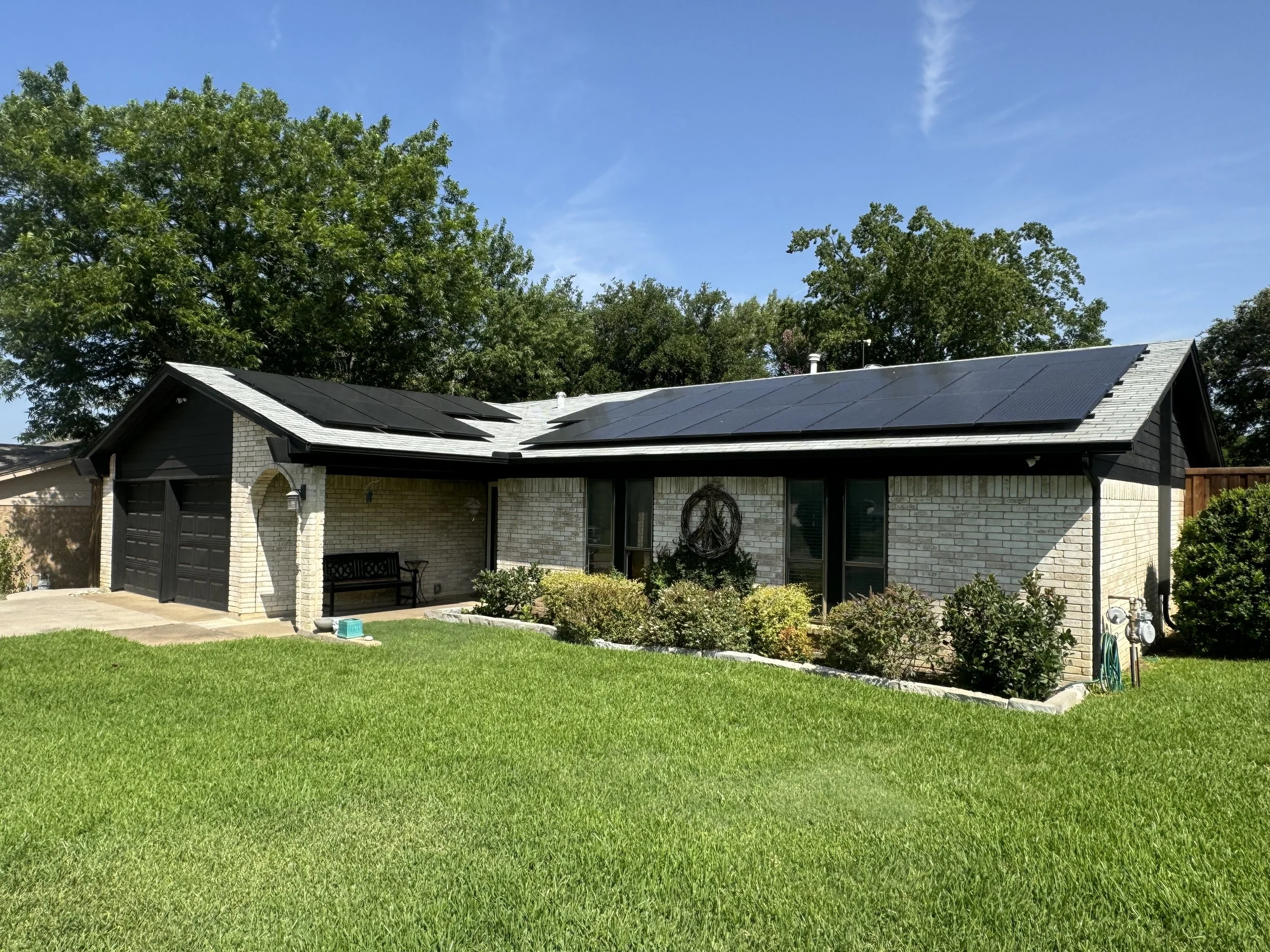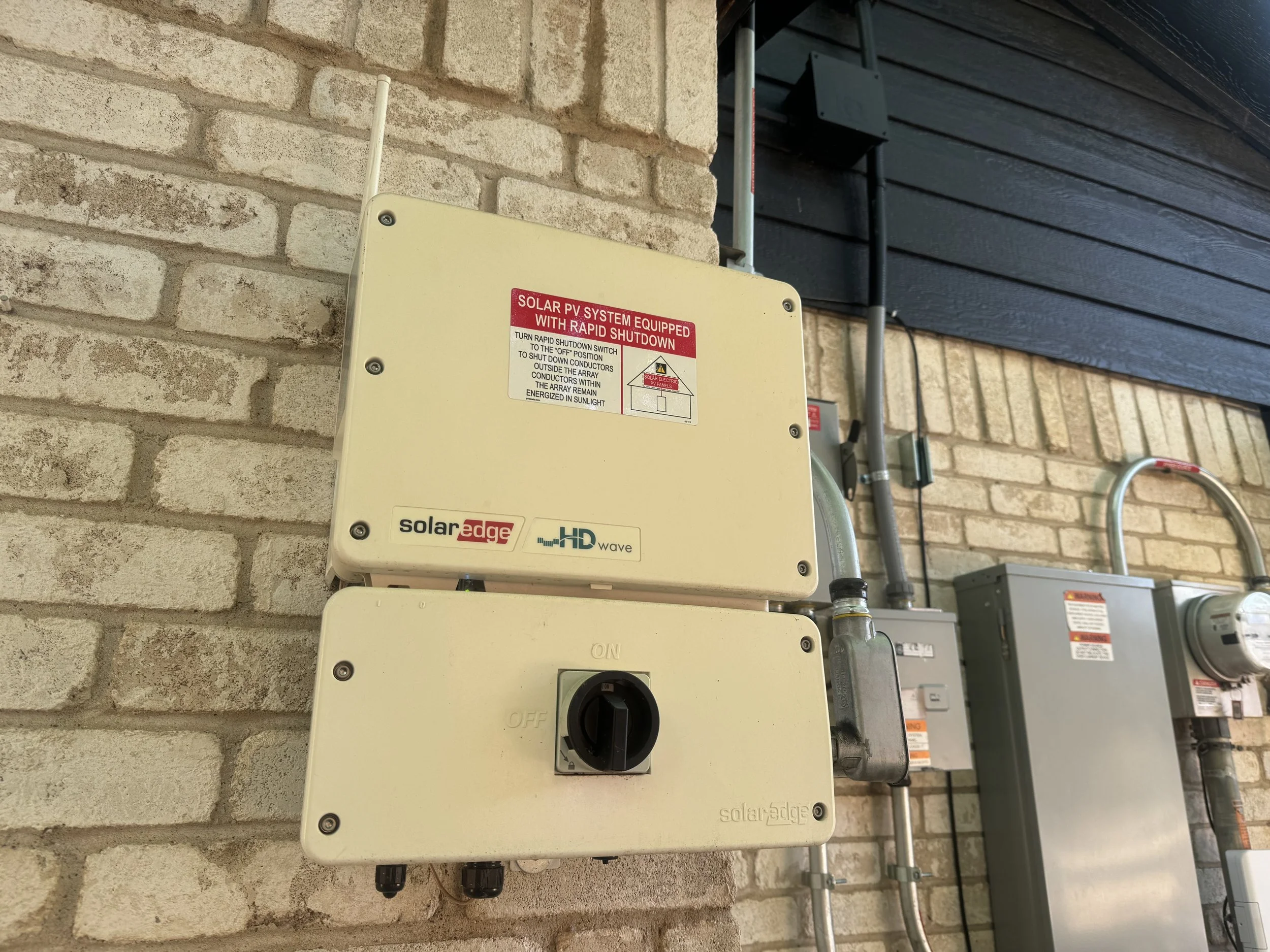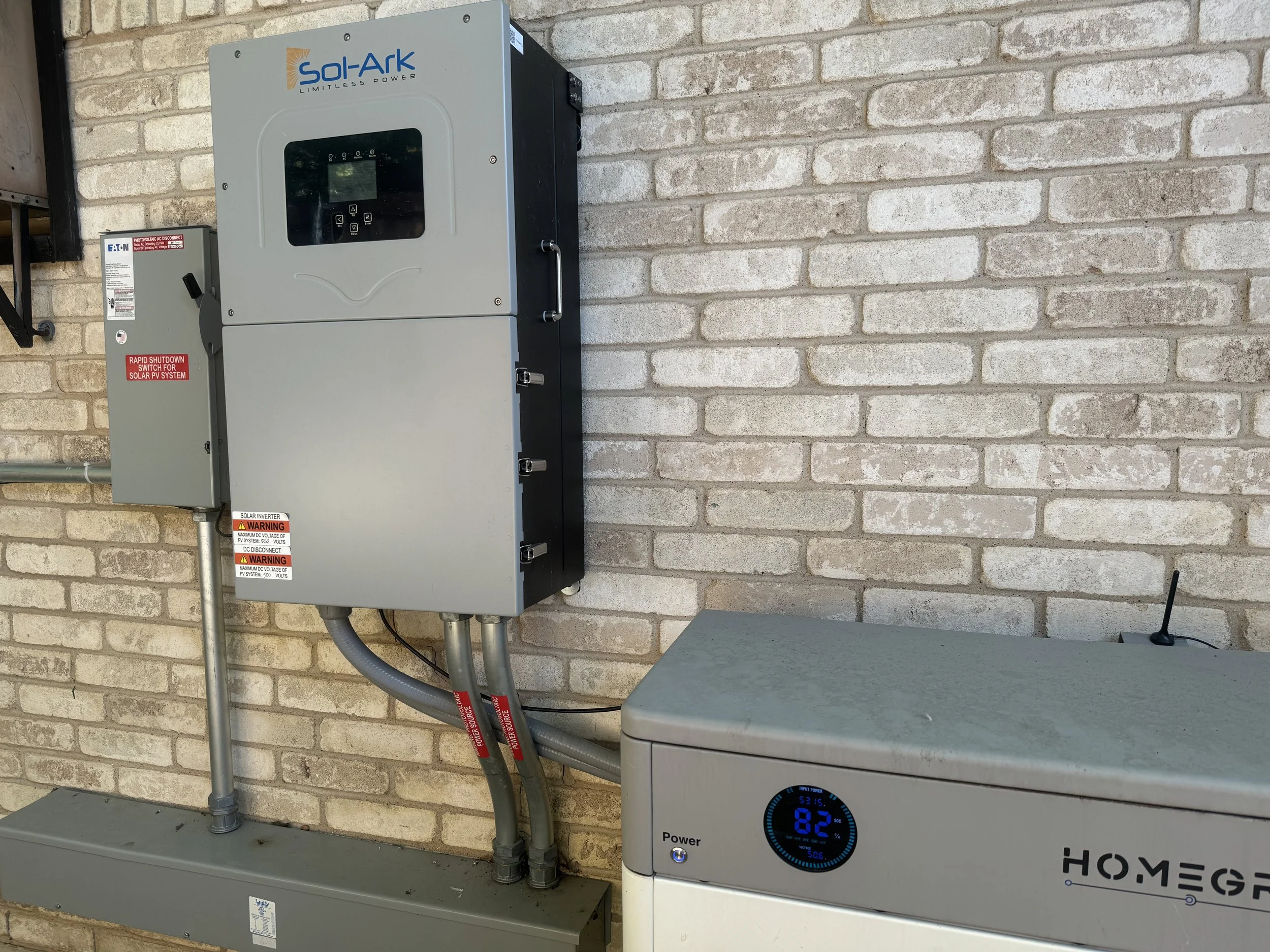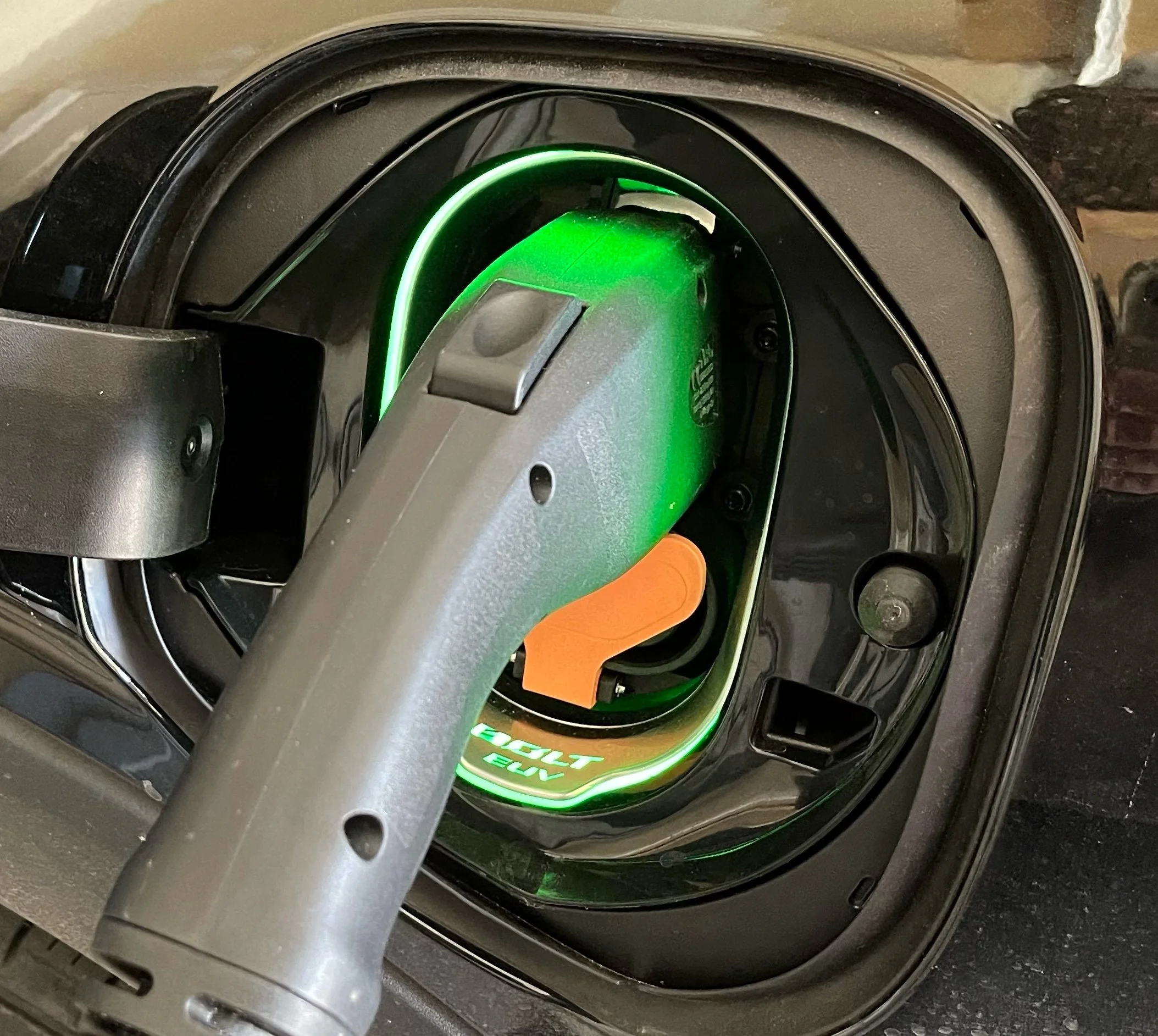Solar FAQ Part Two
In the first FAQ I did (available here) I covered some basic questions based around my solar experiences, and those answers are still valid. If you haven’t read the first FAQ, I encourage you to do that first. However I still get new questions since that FAQ, and some of the answers are fairly interesting - in that they might not be the answers you’re expecting. For the curious, read on…
Do you do net metering?
When you import power from the grid into your home, you are charged a fee for the amount you pull down. A meter keeps track of this. With solar panels, if you are generating excess power that is covering the house load, any extra can be exported back to the grid. Let’s say the rate that you import power from the grid is $0.15 per kilowatt. If you are able to export your excess up to the grid and you get a credit for it that is $0.15 per kilowatt exported, that is net metering. My electric company Green Mountain Energy here in Texas does net metering, and I take advantage of that.
Does net metering have any downsides?
Yes. Some power companies do not match the rates. For example, they might charge you $0.20 per kilowatt imported, but only $0.05 per kilowatt exported. Technically this is not true net metering. Also it does vary from state to state. In Texas where I live, there are no federal regulations to a lot of things related to power and the grid. There is a governing body (ERCOT) that manages several regional grid areas ran by different companies (my area is handled by Oncor), with literally hundreds of actual power companies putting power on the grid itself. These power companies compete on various things including rates and various levels of discounts if certain criteria are met. A few companies do true one-to-one net metering, most offer some type of buy-back for exports from solar panel setups at a reduced rate, and a few do not offer any buy-back at all.
Because of these differences, you not only have to figure out if net metering is offered and whether they actually do offer one-to-one pricing, but in addition they might have features that the others might not have such as free weekends or time-of-use rates. To really understand what will be best for you usually requires a bit of homework surrounding your specific needs. This can be rather confusing at times, because there might be a power company that does not do buy-back but has great time-of-use rates for your lifestyle. The main downside is the homework up front needed.
Also, power company plans can change. For a while I could build up a credit due to my excess power and exporting much more to the grid that I imported, but now this is not the case and pretty much all (at least last time I checked) power companies in Texas that do net metering have monthly caps - I cannot get credit for any export that exceeds the amount of import for the billing period. That extra is simply given to the power company for free.
In Texas all is not horrible, because if you make a poor decision in what power company you chose, switching power companies can be as easy as a phone call and the switch can happen within minutes, assuming you’re not locked into a plan.
Do you take advantage of time-of-use rates?
No, and for a couple of reasons. First off, the power company I use does actual net metering (albeit with those aforementioned monthly caps), and the plan I am on does not support time-of-use rate metering. Also I am assuming that time-of-use rates will be substantially reduced in the future.
Why am I assuming that? Well, look what happened with buy-backs. Early on, many power companies allowed it, but as the popularity of solar increased, it wasn’t as profitable as more power company customers got solar. Therefore in Texas there isn’t a power company that allows buy-back credits to extend beyond the monthly import level.
As electric vehicles grow in popularity, the concept of overnight charging due to lower rates will eventually impact profits to the point the advantages for the power company will go away, and the rates will begin to balance out. I’m glad my solar setup is as powerful as it is, I can actually charge my EV at a lower amperage during a sunny day off of excess from the solar panels and it is more than enough to cover the minimal amount of driving I do (I work from home, no commute). I cover that in more detail in another blog post.
The fact that I have batteries also plays into this. Excess power from the panels covers the house load and anything beyond that charges the batteries. Once the batteries are charged then the excess goes to the grid. I run off of the batteries in the evening which is the time I use the most power, and it usually lasts until I head to bed if not until midnight. With some careful planning (after various experiments) I’ve figured out I can still get get enough export credit to cover the import. Granted this isn’t always the case in the winter due to less daylight overall, but I am working on that!
In essence, this could be considered a form of time-of-use. All major power draws that use solar generated power such as the batteries, the dryer, EV charging, meal prep, and evening lights all take place using direct solar energy or in the evening from the batteries. I’m only pulling from the grid at night. Yes there are exceptions if it is laundry day and there’s thunderstorms and not enough excess solar energy to charge the batteries for evening use, but in general it works out.
What are the seasonal impacts to your setup?
The main impacts are like I referenced in the last question - reduced daylight hours in the winter. Yes it is Texas so it is warm (if not downright super hot) most of the year, with a decent amount of sunshine overall. And the panels still do get a bit of energy on cloudy days, so during the spring when there are a lot of storms and whatnot there is still enough sunshine to hit those monthly caps.
Winter is going to take some adjustments. Due to various regulation in the city of Arlington where I live, I was unable to put my batteries inside the house or even in the garage unless the other side of the garage wall was to the outside. Various electrical layout problems in my garage led me to having the batteries outside, and I discovered last winter that if the battery temperature dropped below a certain level, they stopped allowing for charging. Granted that particular week it reached about 9 F (-12 C) and it was only that week, but I am going to have to come up with a solution for that, perhaps some type of temporary insulated battery enclosure for those extremely cold days. Fortunately temperatures like that are not that common in Texas (the previous winter I was fine), but that month I didn’t reach my cap.
You have solar panels on the north side of your house, isn’t that a waste?
Not at all. First off, my azimuth is off from by 20 degrees, which means my house faces slightly southeast. The 22 panels on the front of the house face slightly more towards the morning sun, and the 8 panels over the garage face into the morning sun as well. As the pitch of the roof is 20 degrees, it doesn’t take long in the morning before the sun rises enough to get sun on the back 16 - even in the winter. From spring on through until fall, the back 16 get a really decent amount of sun because of that 20 degree azimuth.
Also note that on cloudy days the panels are still getting solar energy, and with the cloud diffusing the light so to speak, all the panels tend to perform evenly which partially makes up for the lose of energy. Often on a cloudy day there is still more than enough juice to handle the house load during the day and even charge the batteries with the excess.
Why do you have so many inverters?
Purchasing the first 22 panels with their 11 micro-inverters, these were tied into the house load. This covered the load during the day just fine. Note this was 2017, and batteries were not even being considered. The second phase in 2019 added 24 panels, but this time these were routed into a SolarEdge inverter, and like the previous panels these were simply added into the load. When the batteries were added in 2022, it was discussed that I could have the micro-inverters and the SolarEdge removed, tying the panels into the Sol-Ark - which was needed for the batteries and managing the grid connection. However the cost would have been substantial, as this would require a massive amount of rewiring plus physically removing and reinstalling the original 22 panels. It was substantially cheaper to just tie in the house load as a single entity into the Sol-Ark, which is configured to take any excess load and charge the house batteries first, and then excesses after that are sent to the grid for credit.
Conclusion
The bottom line here is that my situation is unique. I have a unique set of needs so the system I have has been designed, added to, and altered to handle power requirements, regional seasons and weather, and various regulations. My situation won’t work for everyone. But hopefully if you’re putting things together, between this FAQ and the last one you can put together a decent plan for yourself.






